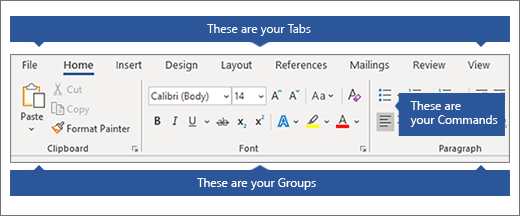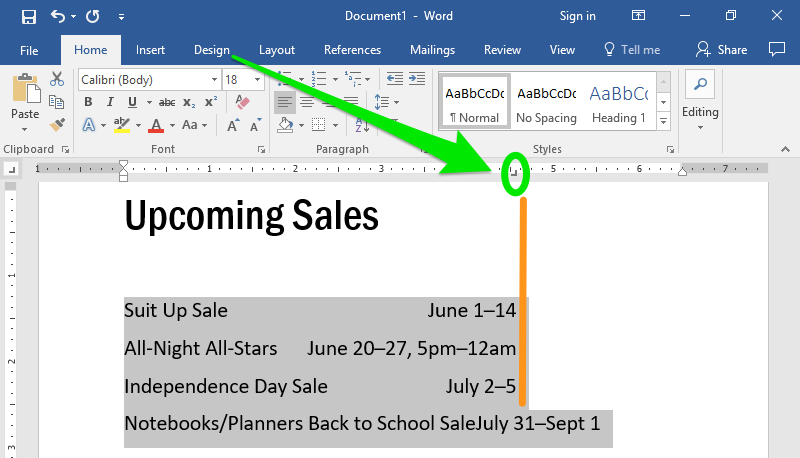

Click the Tabs button at the bottom-left of the dialog box. To navigate to the third tab or document on the tab bar, please press Alt+3 shortcuts. Using Alt+N shortcuts to select tab: If you have open 3 documents in Word, you can use the Alt+ 1 shortcuts to navigate the first document on the tab bar. Word displays the Paragraph dialog box.Ĥ. There are 3 types of shortcuts you can use to control tab or tab bar. Click the small icon at the bottom-right of the Paragraph group. This action selects the entire current document.ģ. While you can use the keyboard to call up the Tabs dialog box and make selections within it, doing so doesn’t technically count as a “keyboard shortcut.” Here is the quickest way to delete all tab stops:ġ. There is no keyboard shortcut to remove tab stops-you must use the Tabs dialog box to accomplish the task. She wonders, specifically, if there is a keyboard shortcut that will do it. Then click OK button to save the new name.Joan is looking for the quickest way to delete all of the tab stops in a Word document. Center tabs allow a Microsoft Word user to define another horizontal point across. And choose the Rename command item from the context menu, then type the new name in the Office Tab dialog, see screenshot:ģ. Please right-click on the tab which you want to rename.Ģ. To label it, right click on it and select Rename. Adding tabs is one of the easiest ways to ensure the text in your Word document is positioned precisely where you want it. Alt+End: Control+End: Move to the first cell in the column. Alt+Home: Control+Home: Move to the last cell in the row. Tab: Tab: Move to the previous cell in the row and select its content: Shift+Tab: Shift+Tab: Move to the first cell in the row.
Set tabs in word shortcut how to#
But with Office Tab, you can quickly rename an open document without closing it first.ġ. How to Create Your Own Customized Tab In Microsoft Word 2013 Customizing the Ribbon. Windows shortcut Mac shortcut Move to the next cell in the row and select its content. Normally if you want to rename an open document in your Microsoft Office applications, you may have to close the document first. If you want to create an additional tab at an exact location, you can use a custom tab stop. To rename current document without closing it first If you double-click on the tab bar, you can quickly create a new document in your Microsoft Office applications. If you have configured specific options which has been indicated with red box in the below screenshot in the Office Tab Center, you can quickly close a tab or document by double-clicking on the tab as well as click middle mouse button on the tab. More flexible when handling Microsoft Office applications In case you want to close an entire Chrome window, then press Ctrl+Shift+W (Windows) or Command+Shift+W (Mac). Tip: If you accidentally close a tab, restore that tab by pressing Ctrl+Shift+T (Windows) or Command+Shift+T (Mac). Shortcuts to hide / display tab bar: You can apply the Ctrl + Q shortcuts to quickly show or hide the tab bar in your Microsoft Office applications. On Mac, press the Command+W shortcut to close an open tab in Chrome. Ctrl + Shift + Tab: To select the tabs backward one by one.Ctrl + Tab: To select the tabs forward one by one.Shortcuts to select tab: You can use the following shortcuts to select or navigate between tabs on the tab bar. Go to Commands > Scroll down by using the arrows and select Subscript. Then it will open the Customize Keyboard box.


On the right > Go down to Keyboard shortcuts > Click on Customize. Using Alt+N shortcuts to select tab: If you have open 3 documents in Word, you can use the Alt+ 1 shortcuts to navigate the first document on the tab bar. In the left pane > click on Customize Ribbon. I type my characters, such as Name:, then press the tab key. There are 3 types of shortcuts you can use to control tab or tab bar. The following example has two underline tabs, set at 3 and 6 inches. For example, if you want to using shortcuts to control tab or tab bar in Microsoft Office Word, please go to configure specific shortcut settings in the Office Tab Center or Tabs for Word Options. To clear a tab stop To use the ruler to set and remove tab stops, see Using the ruler in Word. Type a measurement in the Tab stop position field. You can use shortcuts to control tab or tab bar in specific Microsoft Office application. To set a tab stop Go to Home and select the Paragraph dialog launcher. To promote: Alt+Shift+Left Arrow or Shift+Tab. Using shortcuts to quickly control tab or tab bar


 0 kommentar(er)
0 kommentar(er)
